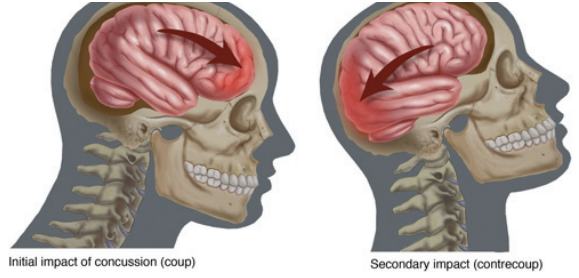Concussions: What You Need To Know

One, two, three, four strikes you’re out, is the new rule that athletes and coaches hold by when it comes to concussions.
At Pace, when an athlete reaches four concussions, their careers might very well be over. As concussions have become a growing concern over the years, technology and research have shed new light on the long-term dangers that the injuries can cause.
Honesty and communication are two important factors when it comes to handling concussions. The athletes need to be honest with their trainers in order to identify possible concussions, as well as to know exactly how many concussions the athlete might have had in the past.
“Telling the truth is always helpful,” head athletic trainer Barry Moriarty said. “Concussions are something you don’t want to risk, it’s your brain. But sometimes you get situations where kids don’t list all of their previous concussions, so you might think it’s their second concussion and it ends up being their fourth.”
The distinction between two concussions and four is very important because four is considered to be the “magic number” when it comes to concussion limits.
The vast research that has been done has found that long-term danger takes shape after four concussions.
“Once a player gets their fourth concussion that’s when we really have to look at their situation and determine whether or not it’s safe for them to continue to play,” Moriarty said. “Now sometimes the players make it easy because they tell us beforehand, if they get that fourth concussion they won’t play anymore.”
The more concussions a person receives, the worse the symptoms become, and risk of long-term damage increases.
The procedure at Pace goes as follows: the concussed have to go to the training staff as soon as possible, then a form is filled out in order to evaluate the severeness of the concussion based on the symptoms.
The symptoms are rated from one to six, with six being the worst. Symptoms include sensitivity to light, dizziness, confusion, headaches, temporary amnesia, among others. In order to recover, rest is required, though in more serious cases the player is examined by a neurologist early on, usually getting an MRI or CT scan.
In all situations the athlete sees the neurologist at some point, but those with more severe concussions meet with the neurologist sooner. Once the severeness of the concussion is determined, rest is the cure. How long the player is out depends on the symptoms and severeness.
“It could be a couple days or it could be a month or two,” Moriarty said. “It really depends. But the protocol now is basically complete rest of the mind. There should be no TV, no video games, no phone, and no computer, not even class. Ideally you want to be in a dark room as well but that doesn’t always happen.
After rest is taken, then the players go through a five-day exercise program to make sure that they don’t experience any more symptoms and are ready to go back to playing. The program is gradual, as workload is increased as the days go on.
If all goes well, and the neurologists and trainers clear the player, then the players can return to the field.
Even when the teams are on the road, the trainers are still able to keep track of any concussions that might occur because they remain in contact with the trainers from the host school.
While concussions are almost impossible to avoid, especially in high contact sports such as football and lacrosse, precautions can be taken in order minimize the risk.
“Lacrosse players wear this sort of helmet cover over their helmet which gives them a bit more protection,” Assistant Athletic Director and head soccer coach Mike Winn said. “Some of the female basketball players were this sort of martial art mask, but in both cases they can only be used for practice. In soccer, however, you can wear protective headgear during practice and during the game. It certainly won’t stop players from getting concussions but it will help prevent it.”
The dangers of having a concussion are very real, but a player might not always realize that until it actually happens, as it happened to softball player Rachel McMahon, who is a junior journalism major.
“You don’t really think about these things when playing ‘cause you are in the heat of the moment, but once it does happen to you that’s when you realize how serious it actually is,” said McMahon, who recently suffered from two concussions she received while playing softball. “Thankfully it wasn’t anything too serious.”
Concussions are bound to happen when playing sports, but it’s important to remember to be honest in these situations in order to receive the proper treatment.
Your donation supports independent, student-run journalism at Pace University. Support the Pace Chronicle to help cover publishing costs.
